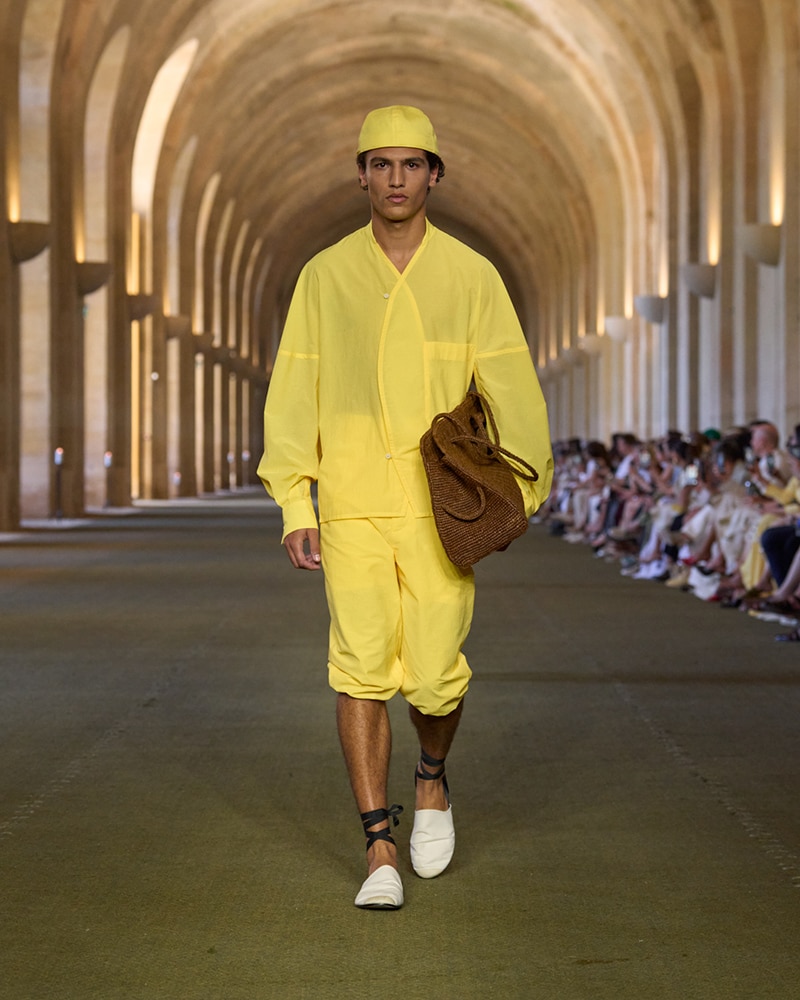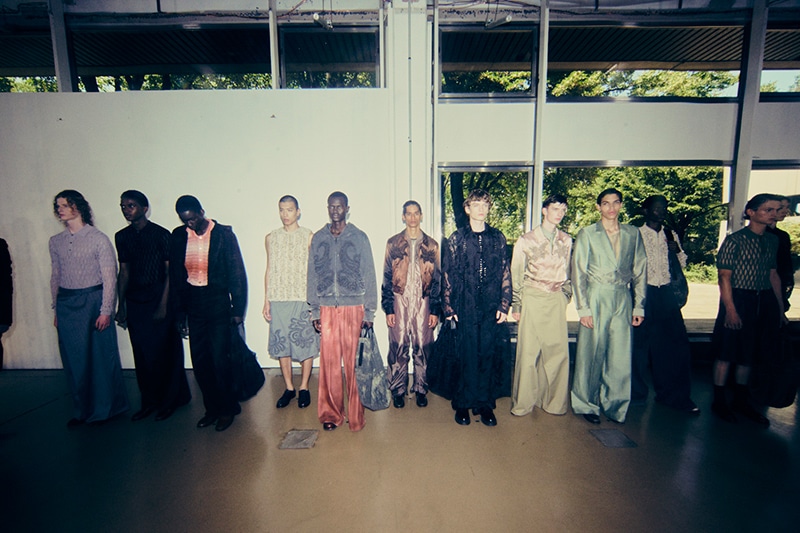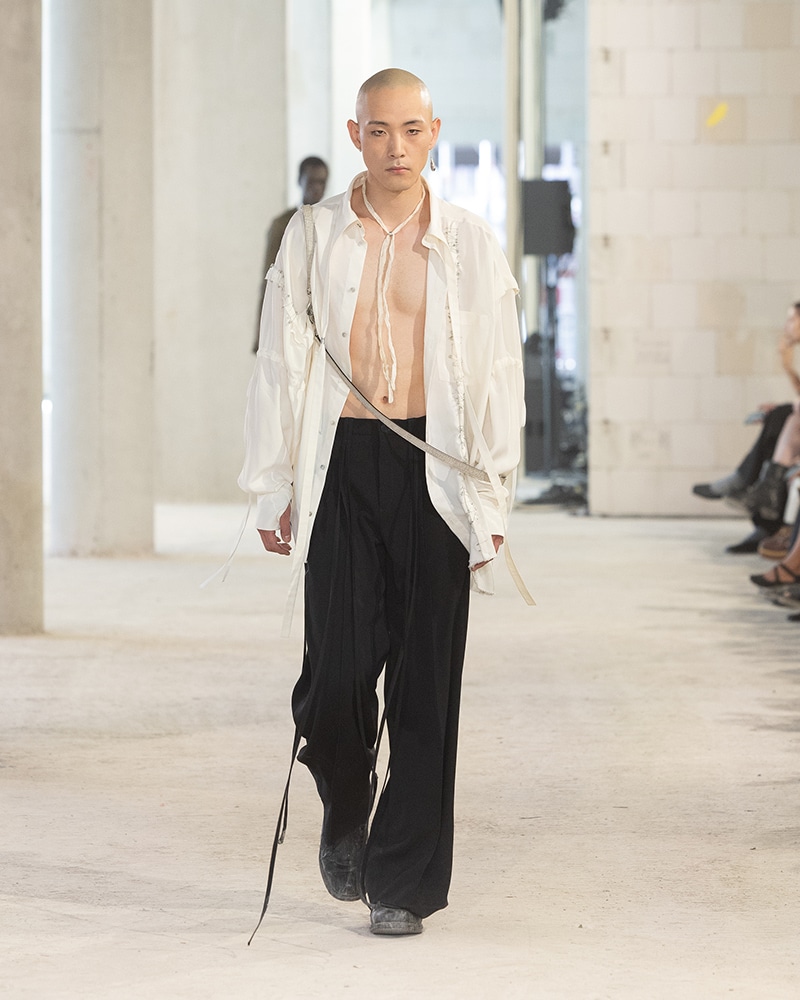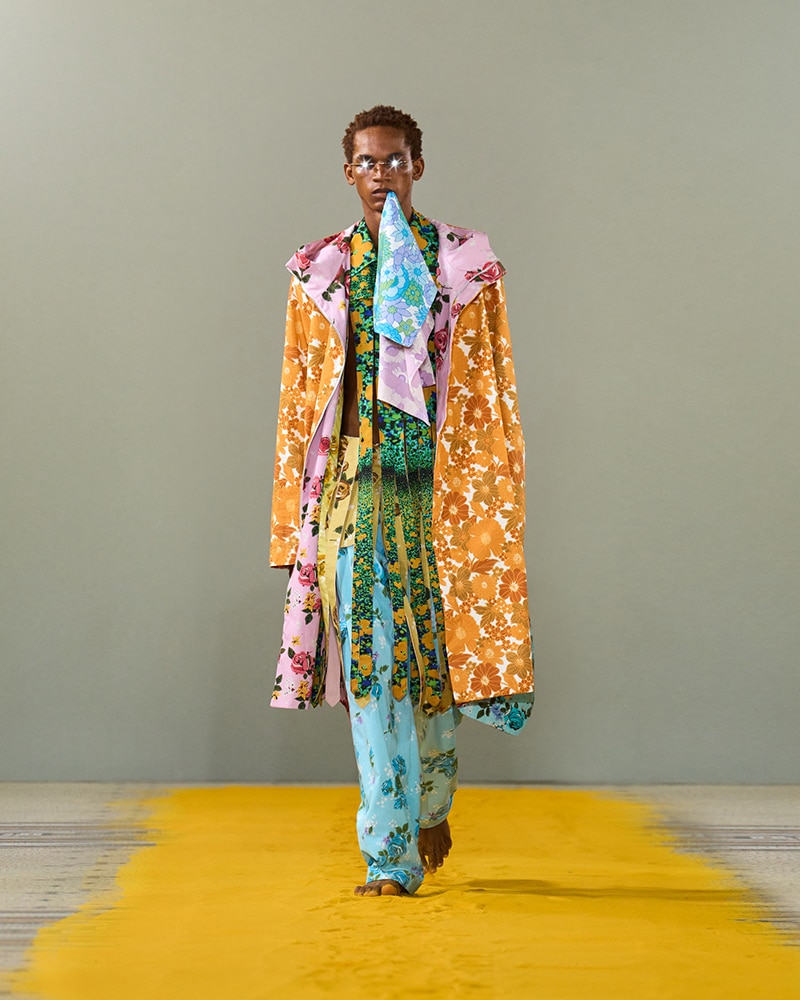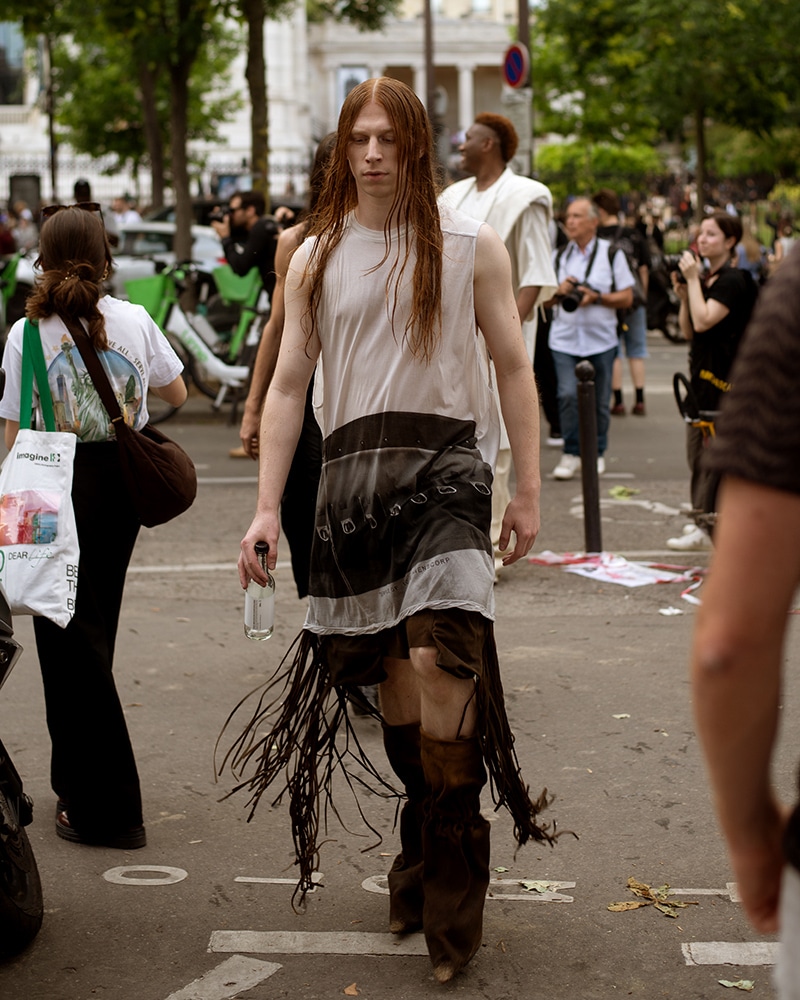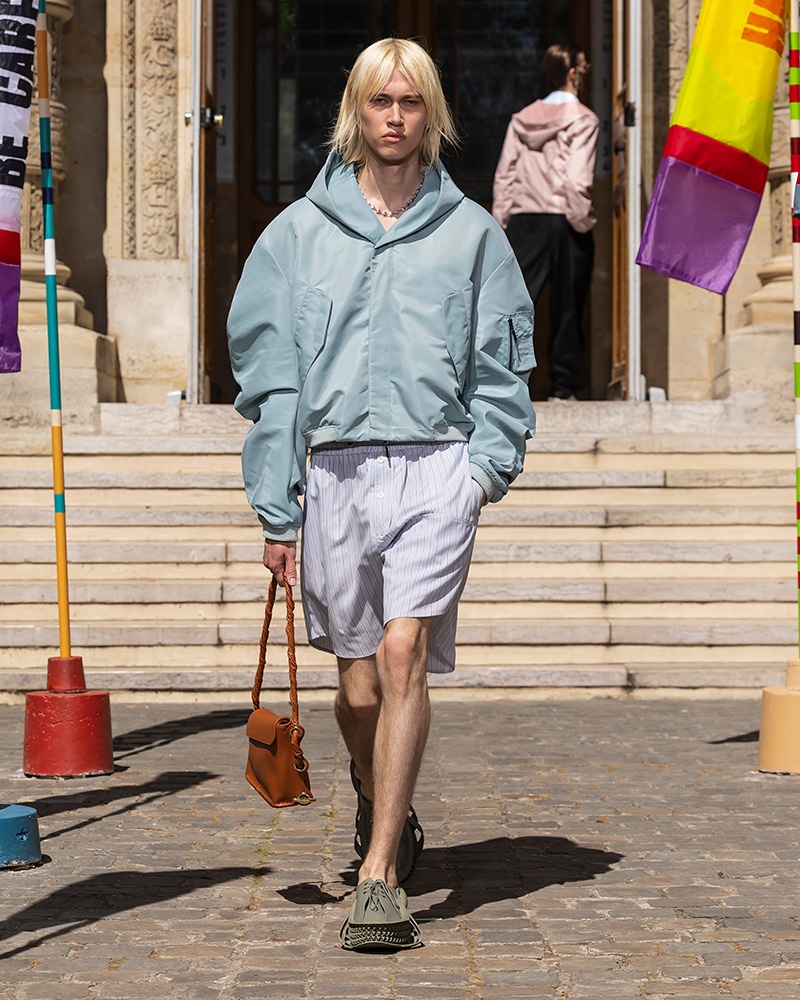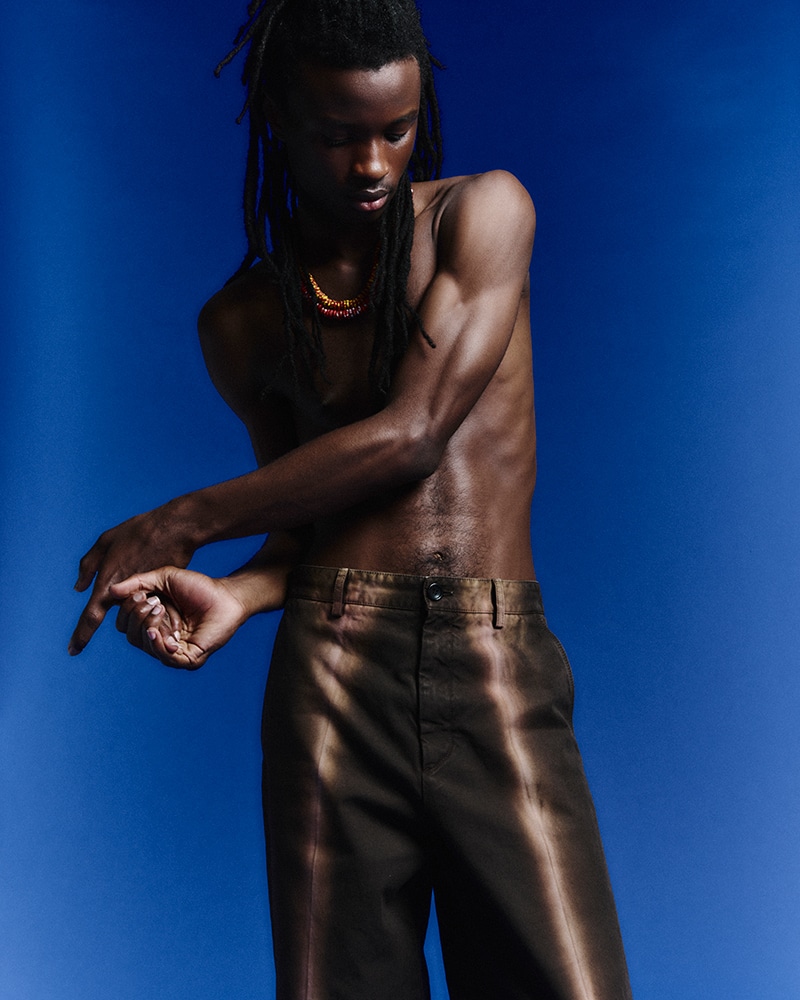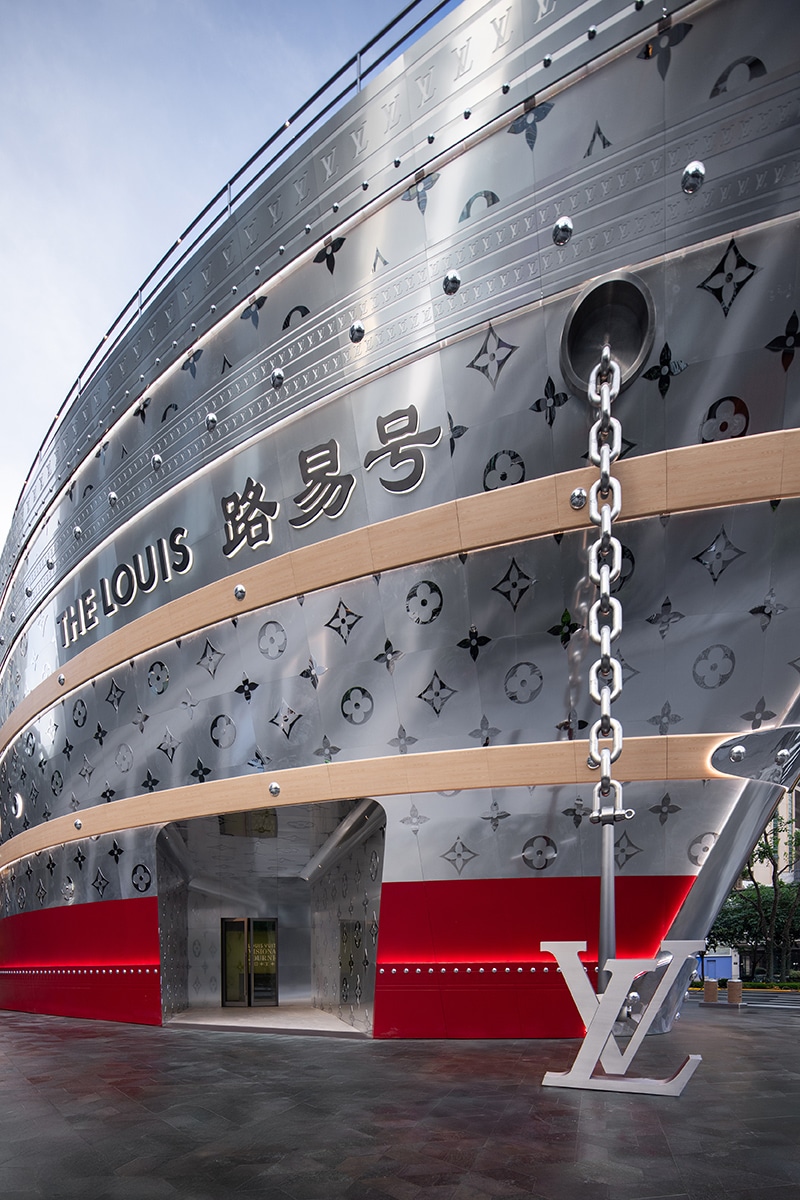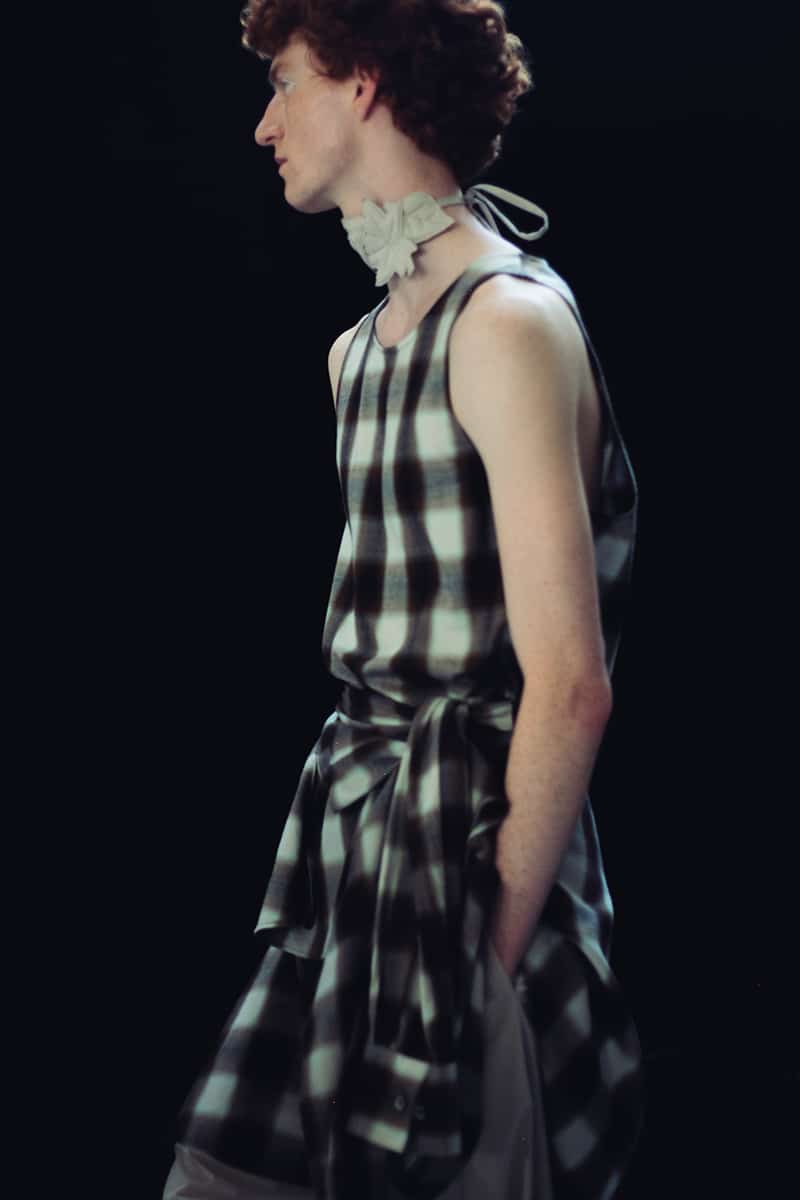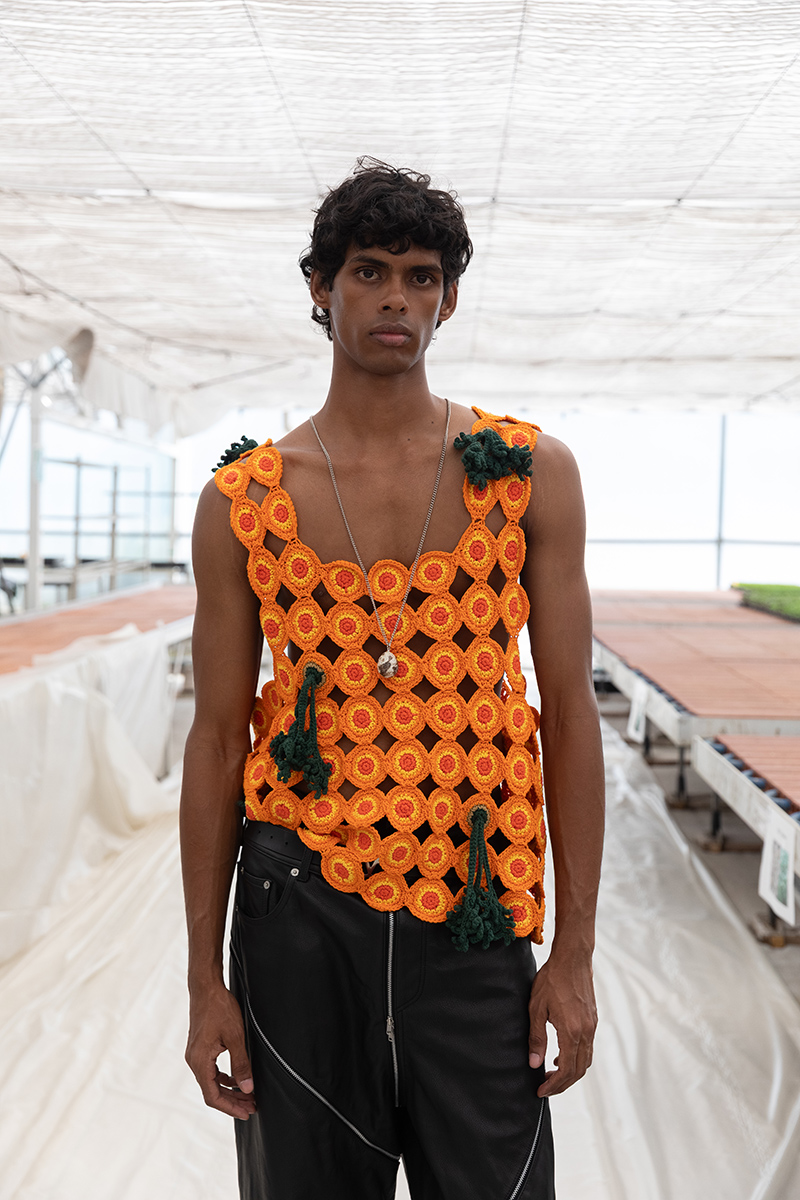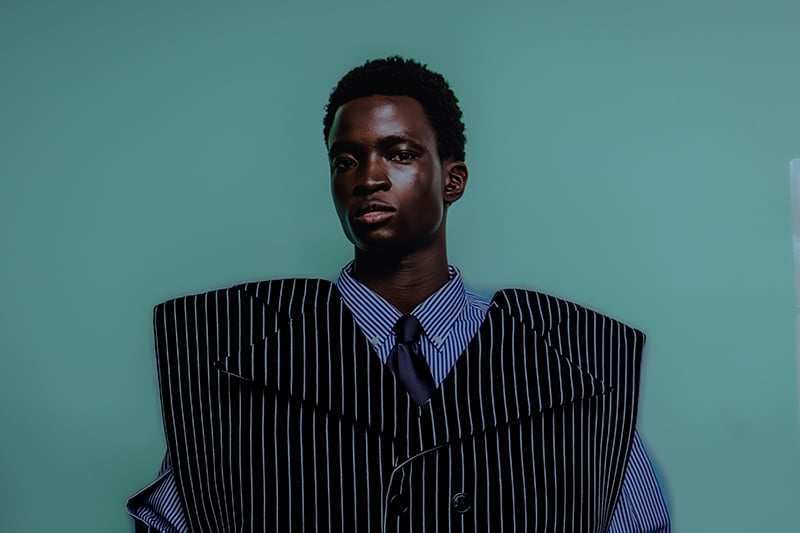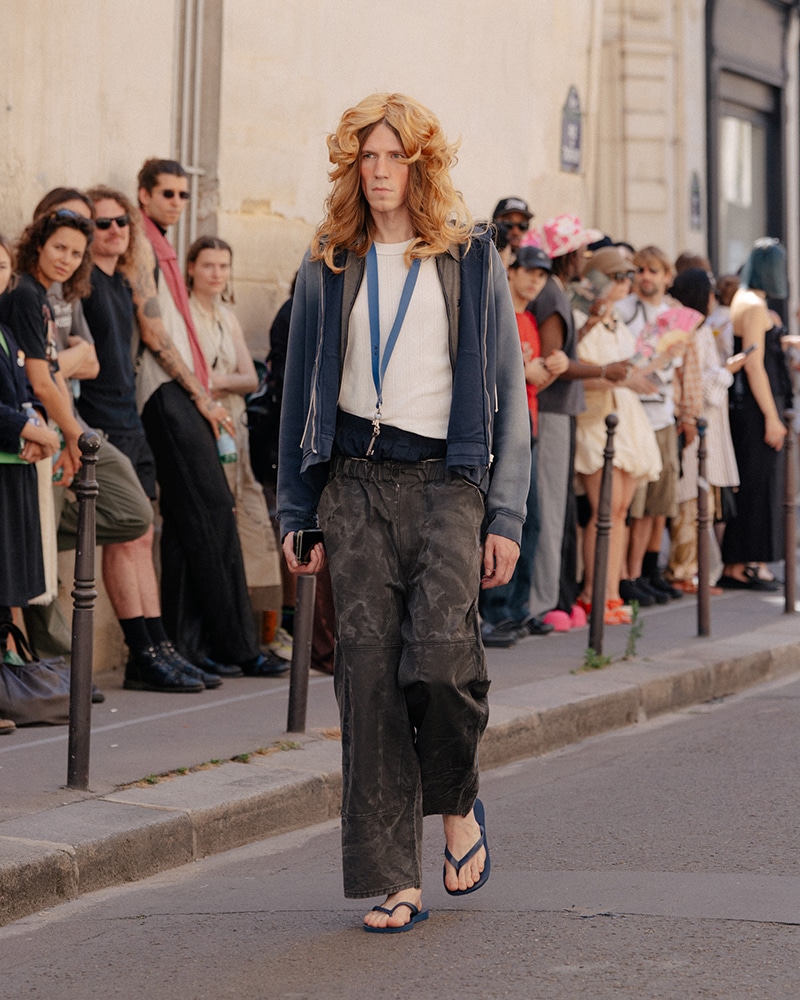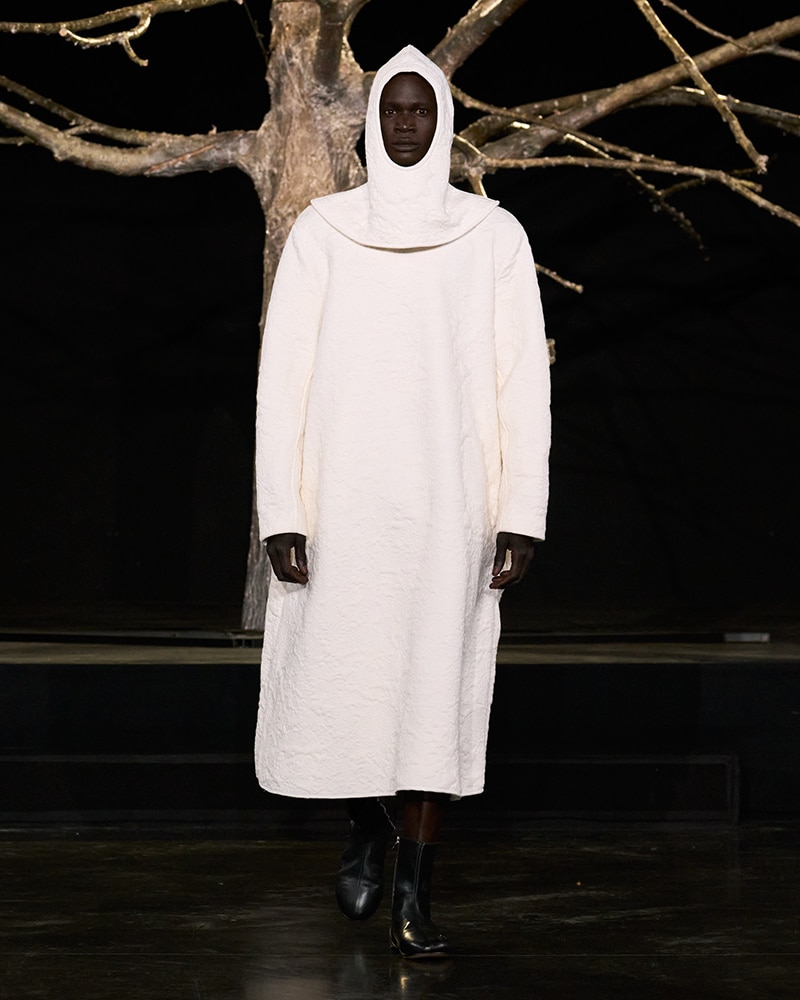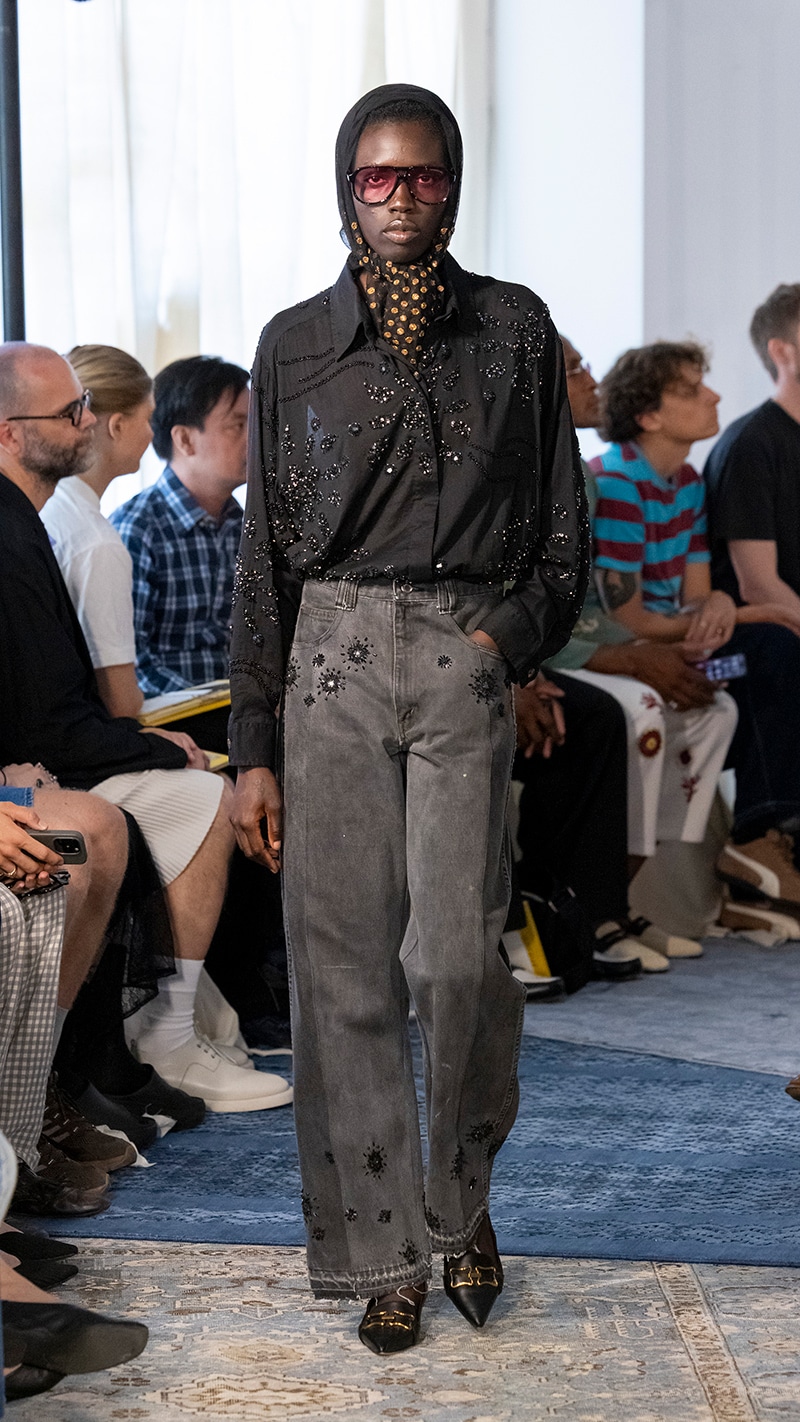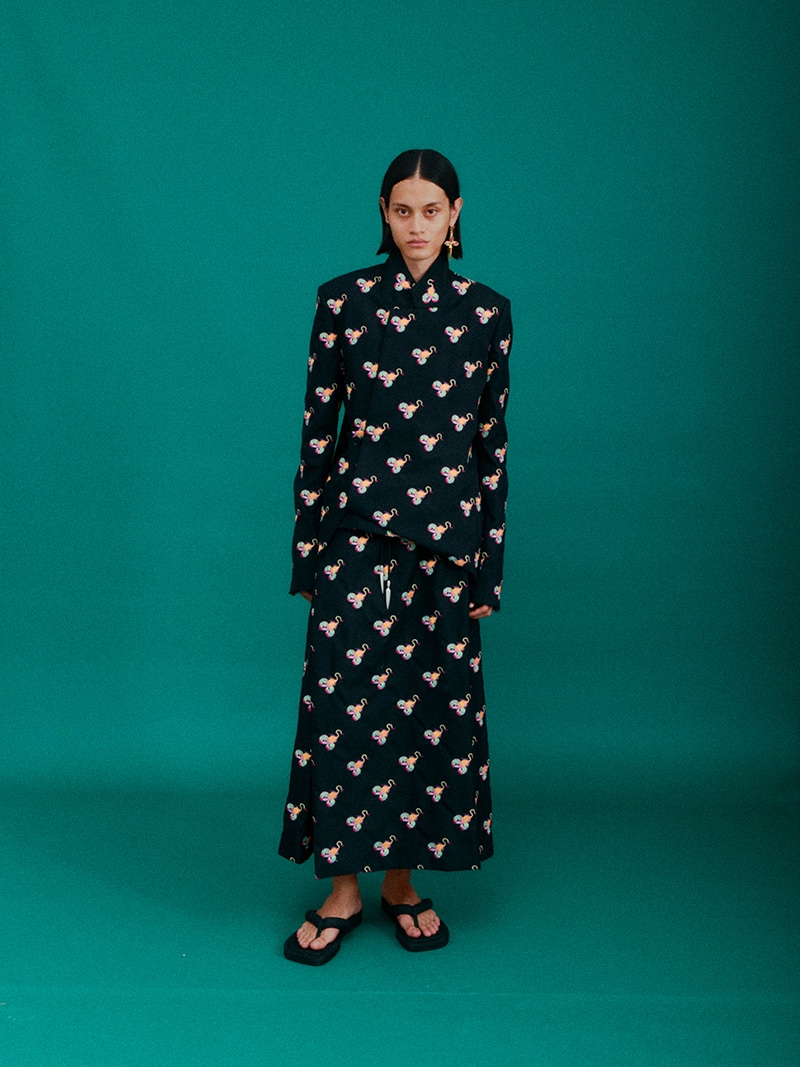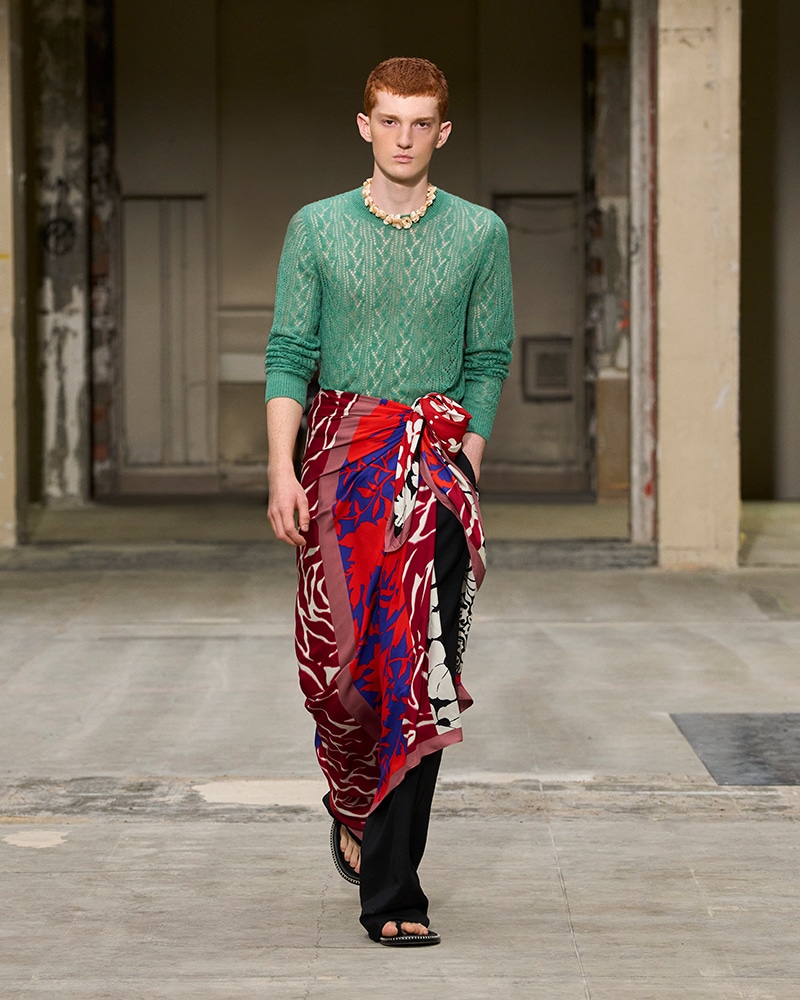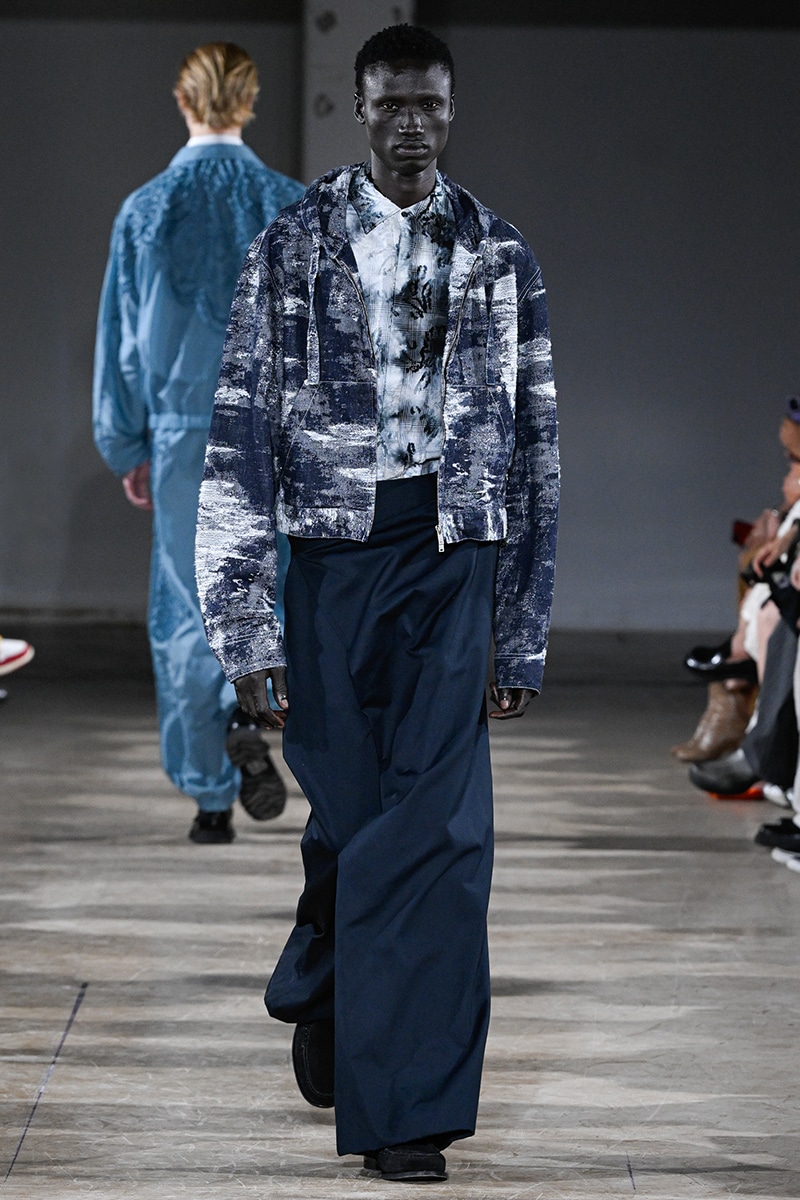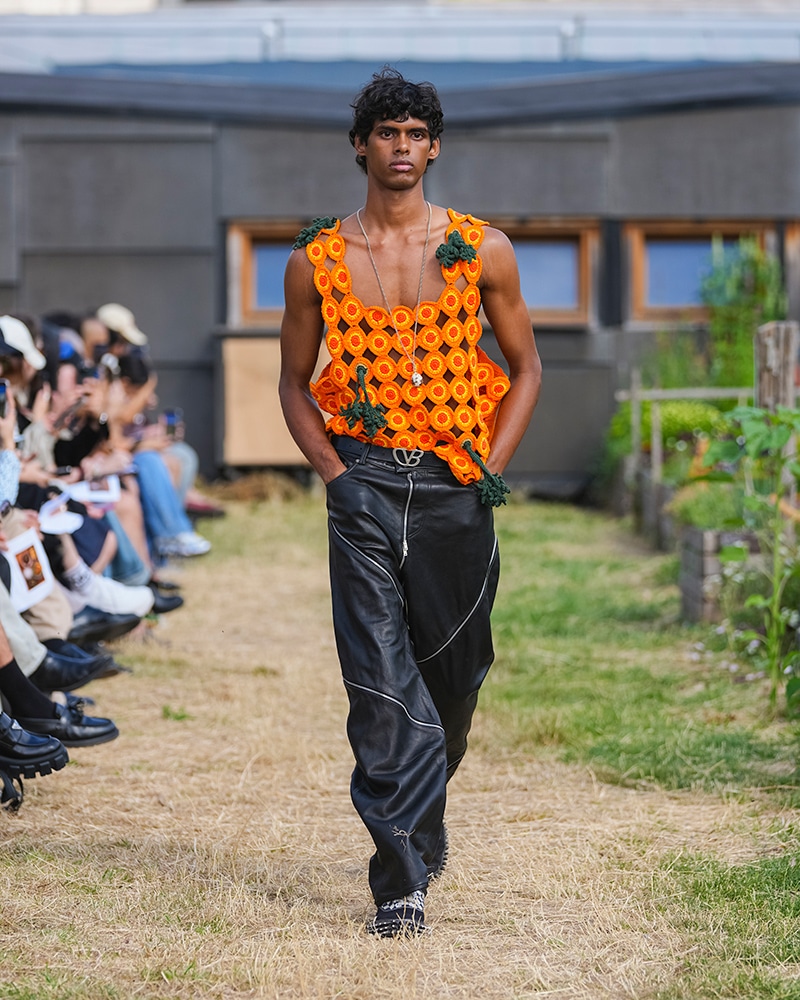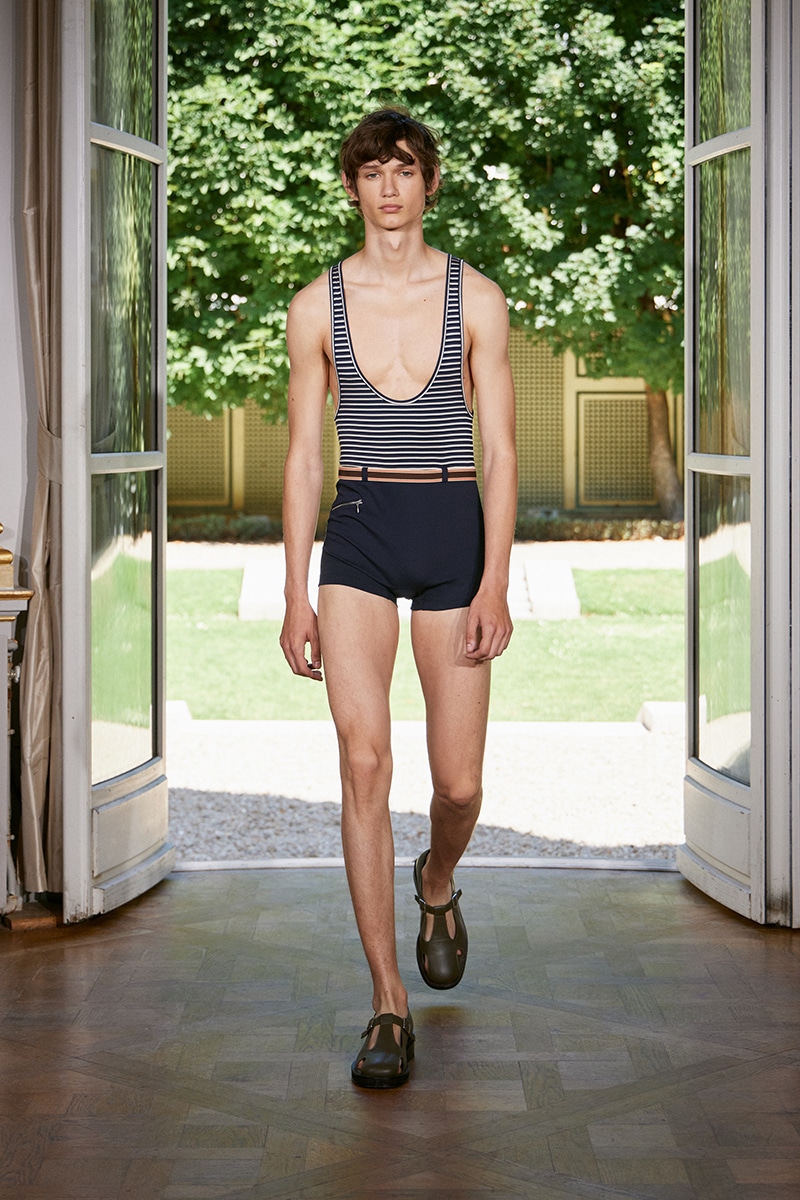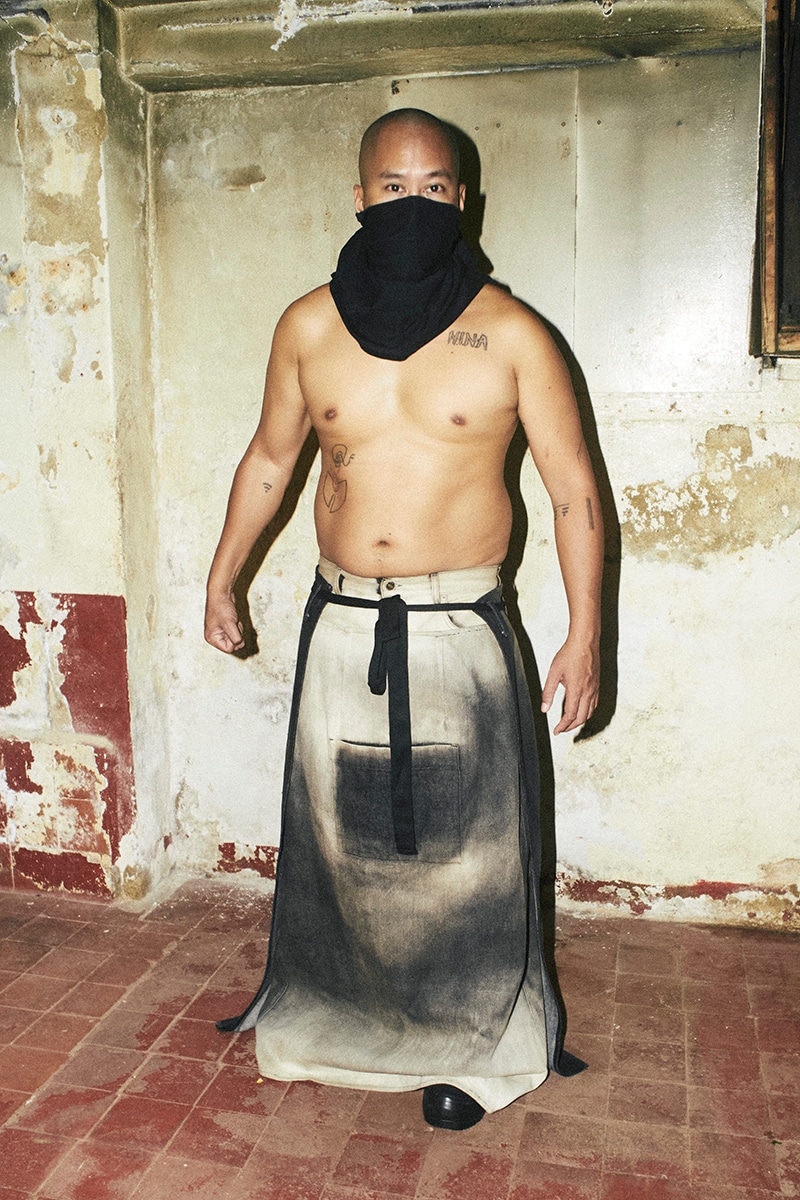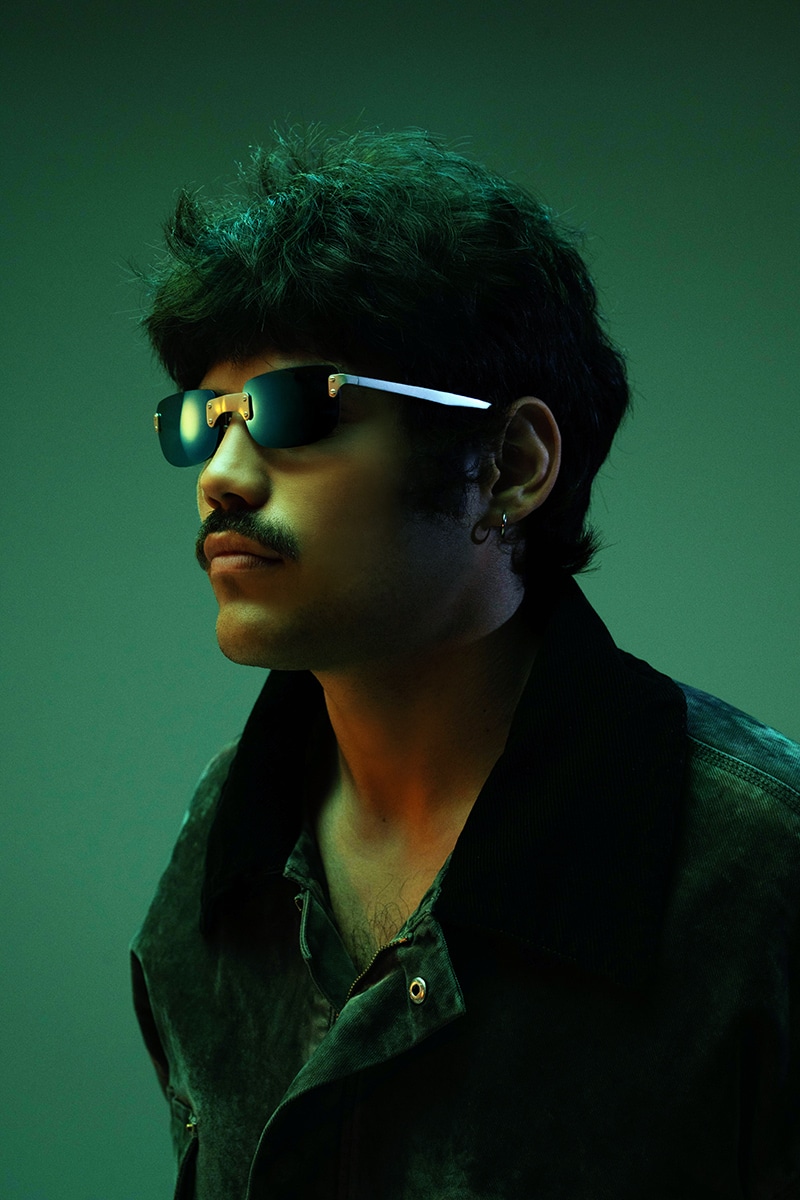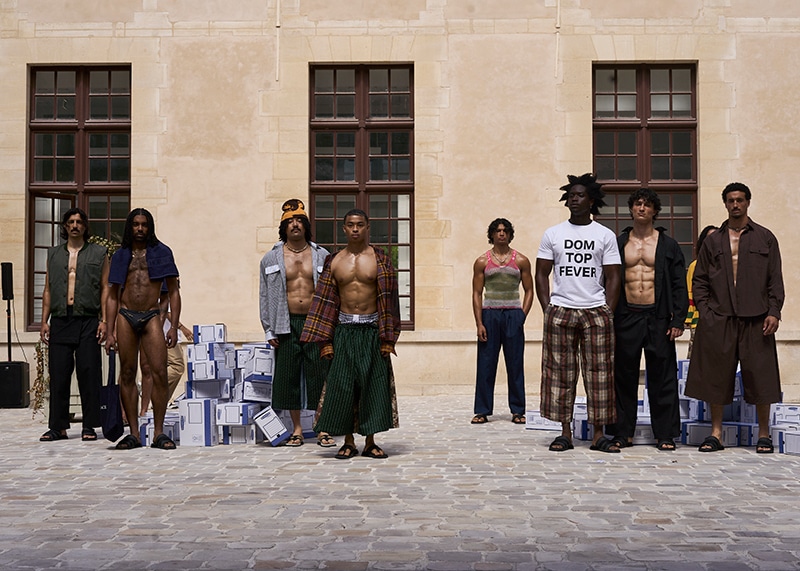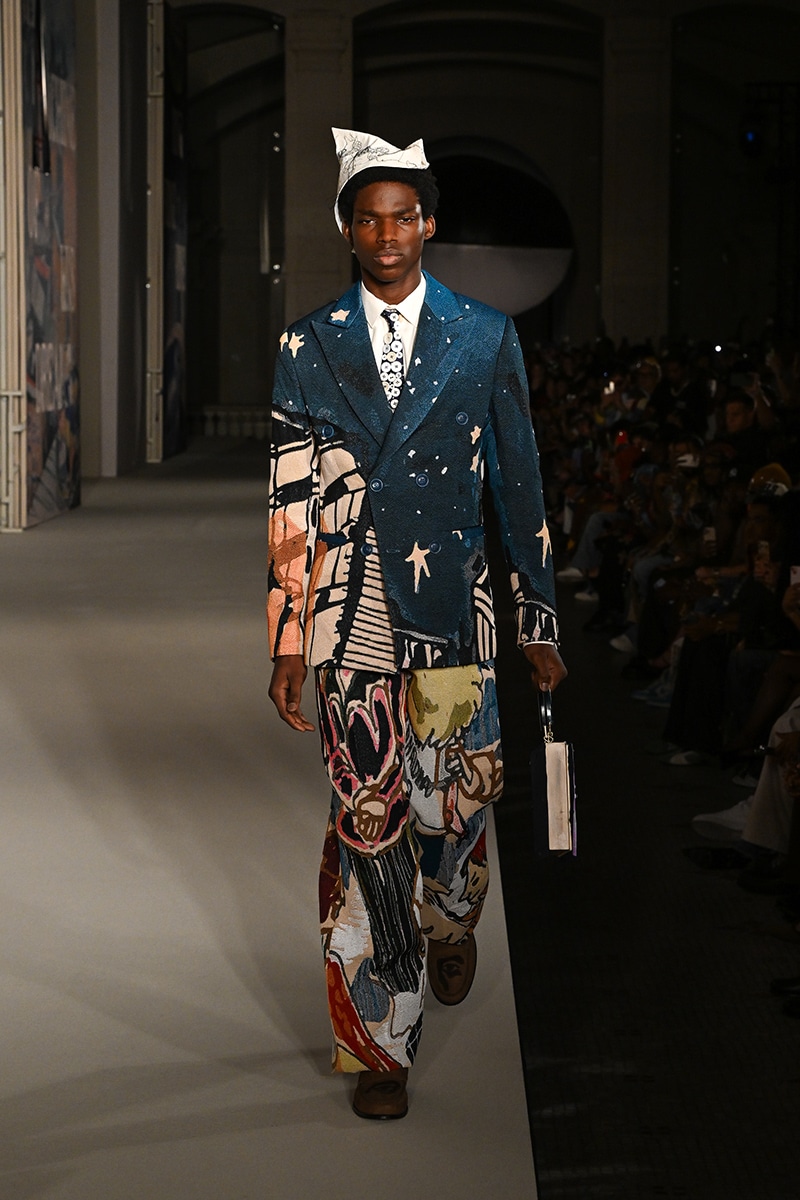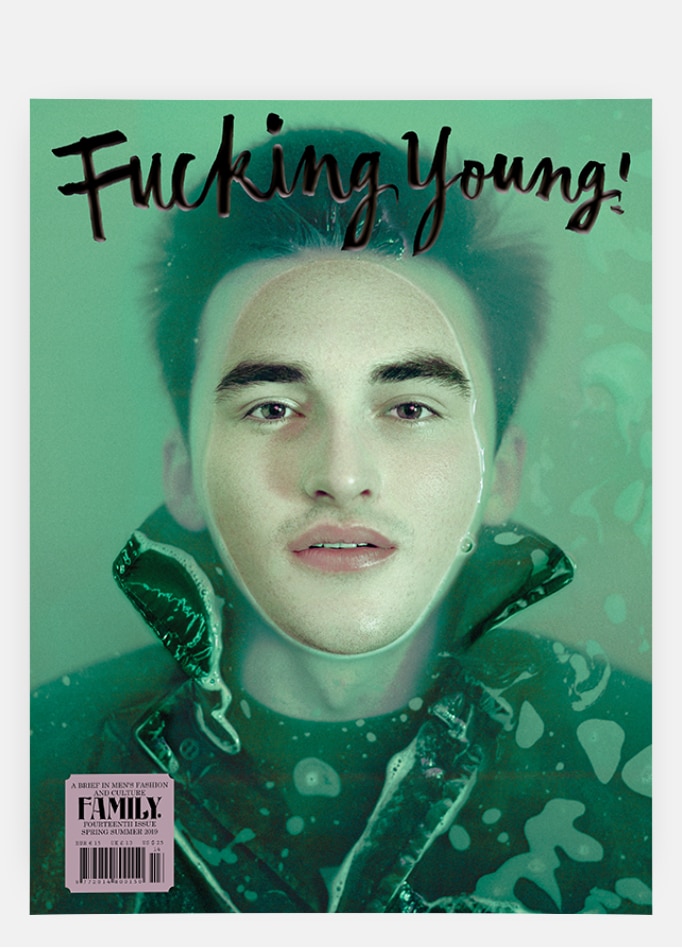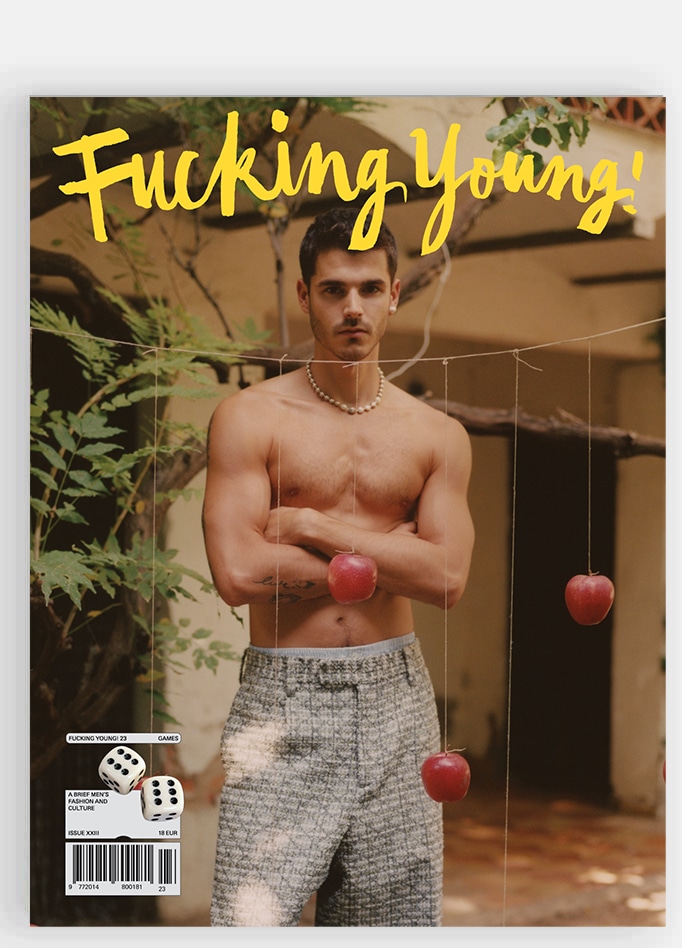“To attain style in dress, you must look perfectly happy and relaxed in your clothes which must appear part of you rather than a wardrobe you have donned.” – Hardy Amies, Tailor

Lee Wood by Marco van Rijt
Lee Wood – English by birth, Milanese by adoption – he appropriates one of the fundamental rules drawn up by the well-known compatriot and in Dirk Bikkembergs he re-launches the very dogma of man fashion.
The one he offers is a breezy masculinity, modern and with no frills. It is an advanced and traditional masculinity, above all daily.
Creative director of the brand founded in 1989 since June 2016, the designer has in a few months overturned the company strategies and broken with a contextually recent past. His fashion is an uncompromising compromise between the ideologically sporty nature of the griffe and the avant-garde/sartorial style dear to the fabulous Six of Antwerp of which Bikkembergs itself was a part. The result is an authentic, rigorous, cool fashion.
Graduated at the Berkshire College of Art & Design and with a long experience in Versace (about sixteen years), Wood knows the rules of the ready-to-wear and the modern market. He is a witty and resolute man, attentive to the systematic changes to which the fashion system is forced. In his Dirk Bikkembergs planning and vision coexist.
We met him some few weeks ago in Milan and this is what he told us.
FUCKING YOUNG! – Hi Lee, well met! What is fashion today?
Lee Wood – Good question! Fashion is above all a big industry, driving business of colossal proportions. It is also creativity and it is a social phenomenon (in my opinion, it should never be political). It is the mirror of what happens in the world. We need to find a balance between what you live, what you think and what the economic spin-off represents. With Dirk Bikkembergs I try to tell an authentic, fairly rigorous man, a man who concretely wears ready-to-wear clothes that are not a purely artistic expression.
Which is the creativity percentage and which the business strategy one?
In the men’s fashion field, they are equivalent. Creativity and business strategy go hand in hand. As for us, we start from the idea, of course, to get truthful and salable collections. I myself must be able to wear my clothes and say, “Ok, I feel comfortable, I’m fine”. I do not want to create something that makes me feel uncomfortable, I’ve never done it. I love the beautiful things, the special ones but within the limits of what is easily wearable.
I like the sentence: “I don’t want to create something that makes me feel uncomfortable”. How often are we forced to reach a compromise?
Always. Either you decide to dedicate yourself to high fashion that is purely creative and personal expression – even though in this case a business strategy is necessary– or you have to deal with reality and then compromise. But I have always said that we are compromised by birth, we also compromise ourselves with our own parents. It’s part the human nature. Think about when at the restaurant you look for something specific but you realize that it’s not present on the menu and finally you choose something else. Compromises can be very stimulating. We can equate them with the rules. Too much freedom can make you lose yourself. Rules help to express a deeper creativity. Maybe we do not like the limits that we have so we think about the problem, we try to circumvent it, to find a valid solution: ok there is a rule but how can we respect it and break it at the same time?
Collaboration. Today in fashion it is an utmost trend. Has Dirk Bikkembergs ever ventured into a partnership? If not, would you do it in the future? Lee, what is your idea about that?
We could do it for sure. I love collaborations. I think they are not only useful for marketing and public relations but also, and above all, they can represent a stimulus both for the internal team and for the external public. Partnerships offer other cues, highlight different aspects of the brand (not always in evidence), gather a more transversal slice of customers. A collaboration today is a wealth. It has not been done yet because for the first two seasons we have preferred to reset the past and stay very focused on the brand identity and the internal product. But there are now a couple of things that boil in the pot.
Actually, looking closely at the last two Collections, we could rightly say that there is already a sort of close collaboration between what is your purely prêt-à-porter aesthetic vision and that of Dirk Bikkembergs, exquisitely sporty. What is the brand today?
When I got the current role I already knew a lot about Dirk Bikkembeergs history and heritage. As a result, I can’t say it was easy but I was aware of what I should have done. The Company had taken a path from a certain point A to a certain point B. During this journey, the public had learned to identify it as a purely sportswear brand but we know that Dirk Bikkembergs is not just that. This worked very well for a considerable number of years, indeed it helped the Company in some cases. But we understood that fashion was changing its direction.
What did I do then? I have come back to the origin, at the point 0 to be able to rebuild an identity. Fashion is evolution, you can’t stay still and I think that in the last years the brand was relatively stationary. My intention was, and still is, redeeming the avant-garde and northern European soul without denying the sports DNA. This was a good starting point, a kind of approach with which you can play and work with criteria. If I had simply attacked the sportswear, the relaunch would have been either undoubtedly more difficult – and probably not understood – or so fluid that it would have risked going unnoticed. On the contrary, a fixed point, a sort of exclamation mark had to be put. The brand needed to be reborn. It’s like when in the past the fields were burned after the wheat harvest. This was useful to reinvigorate the land, it was not synonymous with laziness or listlessness. I think I did the right thing.
How have you become Creative Director of Dirk Bikkembergs?
With the knowledge, a deep knowledge of the brand and its history. With my being a man who works for a male brand: in the morning I wake up wondering what could be used in my wardrobe and in that of a modern man. Who is the Dirk Bikkembergs man? He’s not me or you, he’s any of all us. My approach to the work I do for the brand is the same as I have in my wardrobe: what do I need? Ours is an urban man who travels, works and makes sport. In our collections, he will surely find a piece that can satisfy his needs. He is a man who wants to dress with care but also easily. This is the reason why in our Collections we are inserting codes that make our garments more recognizable and therefore more usable (seams, the processing of pockets, etc.). The intention is to create classic garments speaking the Dirk Bikkembergs’s language. We want to give our man that added value that makes him unique and centered. I have been in charge of this family for twenty months now and the considerations above have become spontaneous, they are my everyday life.
Highlights from your SS18?
Workwear and denim: these have been my first thoughts. I have introduced a lot of five-pocket pieces and denim jackets. I’ve used many fabrics: from technical ones to Japanese denim to the split leather. The intention was to offer garments belonging to the daily life but with a different twist, with that vision, we have already spoken about. The pockets are bold, the shoulders down: the overall look is very macho (like Marlboro-Man). It’s a men’s collection and we know that today it’s hard to find authentic men’s clothes when we go shopping. Besides the big work on denim and cotton, even the one on shirting has great relevance. It is a more spontaneous collection than the FW17-18 and it’s not a case. In summer you need less but this less must be the best.
The most representative item of the Collection?
A jacket in natural split leather and a denim fabric in which we have inserted studs. The jacket takes inspiration from a Japanese building composed essentially of concrete cubes with simple portholes. It’s definitely Dirk Bikkembergs, it’s the most iconic piece.
How will the brand change in the next a year?
The stylistic evolution will go in the undertaken direction. We are going to keep this point of view and develop it more and more thoroughly by adding – season after season- items able to complete the ideal wardrobe. I like thinking of drawing clothes for life rather than seasonal objects: things that you can come out in a couple of seasons to see that they still work, to be clear. Sportswear will always have an important role in our collections: often it will complete them, in other cases we could even have a specific focus on it.
The idea is to provide a simple and affordable key to open new markets and consolidate ourselves in those in which we already exist. Today competition is fierce, it’s time to push and strengthen.
Generally speaking, what are the most interesting markets for you?
The most important markets for our brand – in terms of sales volume – are Italy, Spain, Russia, and France as well. The ones in which I hope for the future are those related to northern Europe, Germany, Great Britain, Japan. Europe plays a very important role for us. The European press has a powerful voice that echoes throughout the rest of the world. At the moment, we are positive. Recent analyses have shown that some countries have already reappeared in the “radar” (for example, Norway).
How does Dirk Bikkembergs fight the fashion system crisis?
It’s hard to me to talk about the crisis. I read, I travel, I see things. If Gucci is depositing + increasing signs, I wonder if this international crisis really exists. If I try to book a restaurant during the weekend, I realize that there is always a full house. The same is for the holiday locations. Is there a real crisis or is it just an excuse to thin out certain realities? The crisis existed in 2008, it is undoubted. Today we can talk about ups and downs rather than a crisis. The fashion made of tendencies, there is a certain cyclic nature: if today I am in credit, surely there is someone else in debt and tomorrow the opposite could happen. What you must always try to do is staying at your pace – for the brand, for the market, for the typical customer – and maybe going beyond the top line when the circumstances occur so as to allow the access to new possibilities.
Last but not least, what is really FUCKING YOUNG! for you?
Some time ago I was reading the interview with Tom Ford that has launched the new perfume Fucking Fabulous. I was intrigued because the designer explained how the word fucking has become part of the common language, of how it has diluted by losing its scabrous nature.
Years ago, when I first heard the name of the magazine, I said to myself: “These guys are crazy!”, and you are in a certain way. FUCKING YOUNG! represents independence. FUCKING YOUNG! it’s a beat. It’s like watching the weather for me. It quotes certain things that are extremely current, moments that we are experiencing. There is a research that looks, pushes forward but staying strongly contextualized in today.

